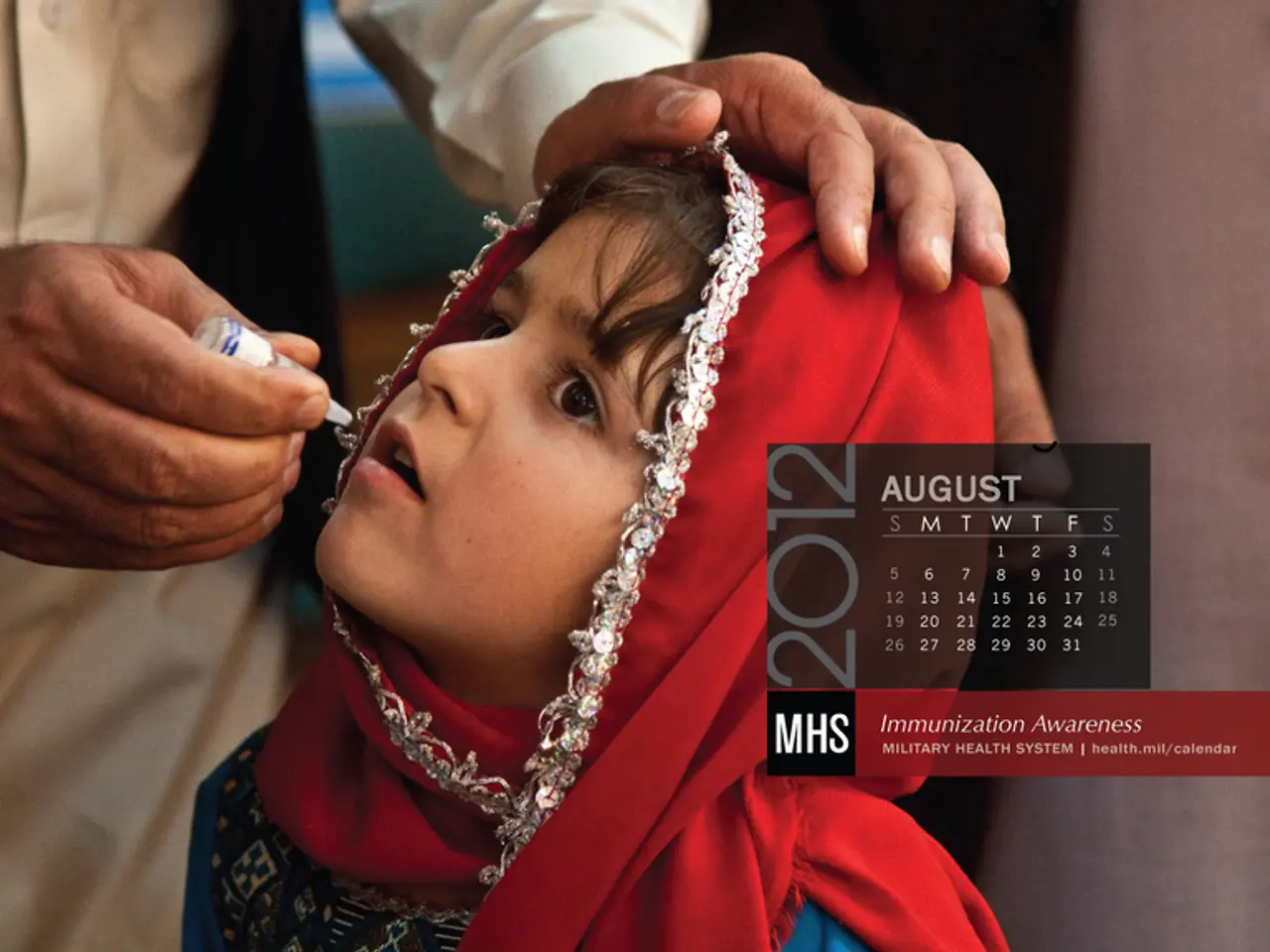Comparison of the HIV/AIDS and COVID-19 pandemics: an analysis
In the midst of the ongoing COVID-19 pandemic, it's worth taking a moment to compare it with another significant health crisis - the HIV pandemic. While there are successful vaccines for COVID-19, HIV remains a formidable challenge.
Nature of Disease and Timeline
HIV, a chronic viral infection, has been with us for over four decades, attacking the immune system and potentially progressing to acquired immunodeficiency syndrome (AIDS). As of 2024, approximately 40.8 million people globally are living with HIV, with around 1.3 million new infections annually, and AIDS-related deaths around 630,000 per year. COVID-19, on the other hand, is an acute respiratory disease caused by the SARS-CoV-2 coronavirus, which emerged in late 2019 and quickly spread worldwide, causing a pandemic primarily from 2020 onwards.
Modes of Transmission
HIV is primarily transmitted through direct contact with certain body fluids including blood, semen, vaginal fluids, and breast milk. In contrast, COVID-19 spreads mainly through respiratory droplets and aerosols when an infected person coughs, sneezes, talks, or breathes.
Epidemiological Course and Impact
HIV leads to a long-term infection with gradual immune system weakening, often over years, leading to opportunistic infections and cancers without treatment. Antiretroviral therapy (ART) can control the virus and prolong life. COVID-19 often causes acute symptoms including fever, cough, and respiratory distress, with recovery or death within weeks. Vaccines and treatments have reduced mortality and severe illness.
Distinct Challenges
HIV’s stigma, chronic nature, and modes of transmission require ongoing prevention strategies centered around safe sex, testing, and treatment access. COVID-19's rapid spread and airborne transmission necessitated urgent public health responses including social distancing, masking, and vaccination campaigns.
Research and Treatment
Researchers are working on developing broadly neutralizing antibodies (bNabs) to stop a wide range of HIV strains. For COVID-19, SARS-CoV-2 is primarily an airborne infection, spreading through respiratory droplets and tiny particles released during breathing, coughing, sneezing, or talking. The Food and Drug Administration (FDA) has issued emergency use authorizations (EUAs) for treatments like remdesivir and monoclonal antibodies for COVID-19.
Preventive Measures
Preventive measures for HIV include modifying sexual practices, using pre-exposure prophylaxis (PrEP), using post-exposure prophylaxis (PEP), no needle sharing, testing for and treating HIV, and avoiding sharing bodily fluids. The CDC recommends staying up-to-date with vaccines and boosters, improving airflow and ventilation, testing for COVID-19 when symptoms occur, and following isolation and mask-wearing guidelines.
Impact and Disparities
Since the beginning of the HIV pandemic, there have been almost 78 million HIV infections, and nearly 40 million people have died from AIDS-related illnesses. The WHO's coronavirus (COVID-19) dashboard reports over 750 million confirmed COVID-19 cases and nearly 7 million deaths. There is still a disparity between wealthy and low-income countries when it comes to COVID-19 vaccination efforts, with only about 30% of people in low-income countries having received at least one dose of a COVID-19 vaccine.
In summary, HIV is a slow-progressing, primarily sexually and blood-transmitted chronic infection with a multi-decade global impact, while COVID-19 is an acute respiratory illness spread by respiratory routes causing a quick, widespread pandemic starting in 2019. Both pandemics, HIV and COVID-19, have caused disruption, fear, and loss of life worldwide.
- Despite successful vaccines for COVID-19, HIV, a viral infection that has been around for over four decades, remains a formidable challenge, with approximately 40.8 million people living with HIV in 2024.
- Unlike HIV, which primarily spreads through direct contact with certain body fluids, COVID-19 predominantly spreads through respiratory droplets and aerosols, causing the rapid spread and airborne transmission that necessitated urgent public health responses.
- While HIV leads to a long-term infection with gradual immune system weakening, often over years, and requires ongoing prevention strategies centered around safe sex, testing, and treatment access, COVID-19 often causes acute symptoms including fever, cough, and respiratory distress, with recovery or death within weeks.
- Researchers are working on developing broadly neutralizing antibodies (bNabs) to stop a wide range of HIV strains, similar to how vaccines and treatments for COVID-19 have reduced mortality and severe illness.
- There remains a disparity in COVID-19 vaccination efforts between wealthy and low-income countries, with only about 30% of people in low-income countries having received at least one dose of a COVID-19 vaccine, in contrast to the widespread impact and loss of life caused by both the HIV and COVID-19 pandemics.




